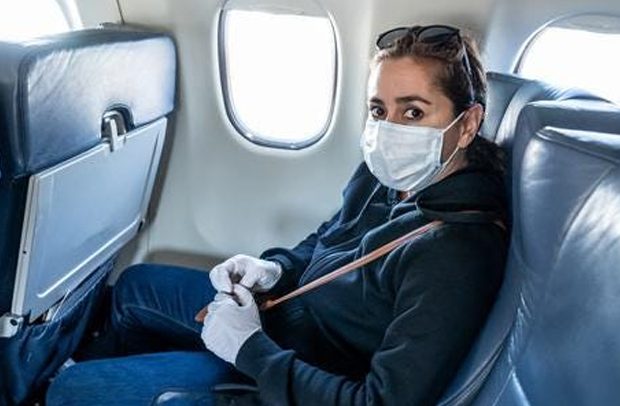A passenger on board a flight
A NEW Airports Council International (ACI) World data shows the lasting adverse impact of the COVID-19 crisis is forecast to remove an additional five billion passengers by the end of this year compared to the pre-COVID-19 forecast.
Compared to 2019 levels, this is expected to be -47.3% by year end with domestic passenger traffic recovering faster than international traffic.
Globally, domestic traffic will continue the recovery started in 2020 to reach close to 3.3 billion passengers by the end of 2021 (61.4% of 2019 levels).
Linked to traffic reductions, ACI World estimates that, globally, airports will suffer the reduction of more than $108 billion in revenue by the end of the year, down by more than half of expectations (-54.6%).
It is expected that each quarter of 2021 will show improvements compared to the previous one, moving from a decline of -71.4% in the first quarter of 2021 to a decline of -37.2% in the fourth quarter.
It said as vaccinations continue and travel restrictions are slowly eased, more passengers are expected to return to travel in the second half of the year.
While international passenger traffic remained weak in the first half of 2021, signs are pointing toward a surge in air travel demand for the second half of the year. However, much uncertainty still surrounds the long term recovery of the aviation industry.
Despite the slower than expected first half of 2021, ACI World expects global passenger traffic to recover to 2019 levels by the end of 2023 which will be mainly driven by the recovery of domestic passenger traffic dampened by a slower recovery of international travel.
In the long run, it is predicted that the global traffic may take up to two decades to return to previously projected levels.
“Despite increasing positive signs, Covid-19 remains an existential crisis for airports, airlines and their commercial partners and aviation still needs support and reasonable policy decisions from governments if an even, sustained recovery is to be realised,” ACI World Director General Luis Felipe de Oliveira said.
“Air traffic is the lifeblood of the airport business as practically all aeronautical revenues are a direct function of traffic including passenger-related charges from passengers and aircraft-related charges.
“As traffic declined, airports’ ability to collect those charges decreased proportionally and, with little flexibility in operating expenditures, coupled with capital costs that are largely fixed, the current crisis represents an unprecedented challenge for the airport industry’s financial viability.
“The implications of this go beyond airports because airports play a pivotal role in the aviation ecosystem which is crucial for the global economic recovery from the impact and effects of COVID-19. Aviation contributes trillions to world gross domestic product, supports millions of jobs, and fosters the sustainable development of the communities we serve.
“Dramatically reduced airport revenues have added even greater challenges to meeting long-term capacity needs, not to mention realizing the global airport industry’s long term commitment to reach net zero carbon emissions by 2050,” Luis Felipe de Oliveira said.
He added, “We will need governments to work with airports in supporting and incentivising recovery and to mitigate the risks of falling short on the sustainable long term growth for the industry.”


